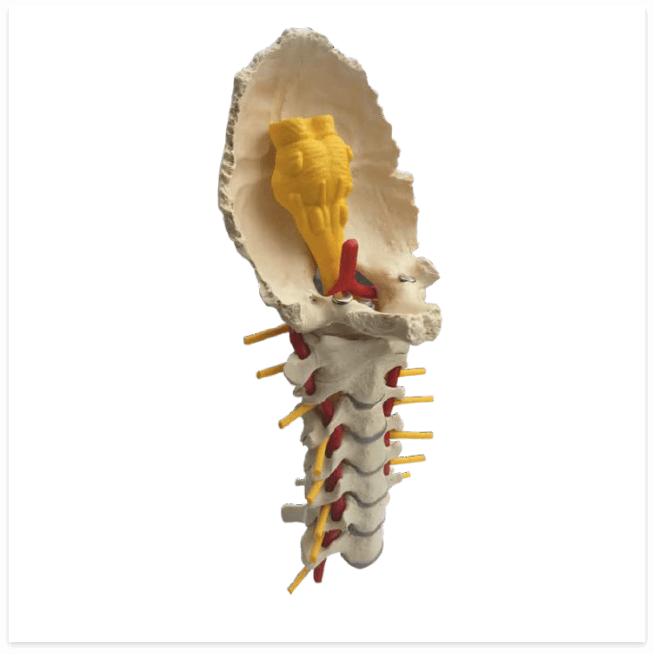Treatments
Atlas vertebra therapy

What is Atlas vertebra therapy (Vitalogy)?
Vitalogy was developed in 1981 by Dr. Peter Huggler, a graduate of the Palmer College of Chiropractic. It is a method that focuses on the atlas vertebra. Dr. Peter Huggler wanted to understand why so many people suffer from chronic illnesses. He finally concluded that many cases present with a minimal displacement of the atlas vertebra, which puts constant pressure on the nerve pathways and spinal cord. Even the slightest displacement of this vertebra can affect the entire spinal column.
A blocked atlas vertebra is often accompanied by tension typically affecting the neck and shoulder areas, but these symptoms are often not recognised as being connected to the blocked vertebra. With the therapy method developed by Dr. Peter Huggler, the atlas vertebra can be returned to its original position, which relieves muscle tension. The nerves can relax and the body’s self-healing power is restored.
Anatomy
Treatment areas
Our head, with a weight of 6 - 8 kg, sits atop the atlas vertebra. This is joined to the skull via a joint, which forms the transition between the skull and the spinal cord. This means that the atlas vertebra has to balance the entire weight of the head. As the first vertebra beneath the head, it forms a crucial connection between the central nervous system and the body. All nerve pathways must pass through the atlas vertebra. Even a small displacement can cause a host of symptoms. Vitalogy can have a positive effect on these types of symptoms or illnesses.
Treatment areas
This method can relieve symptoms of the musculoskeletal system, back pain, symptoms caused by whiplash, hip pain, or tension in the back muscles and the pelvic misalignment that this can cause. The misaligned posture places undue stress on shoulder, hip, and knee joints, which can cause long-term joint pain and arthritis. In addition, other health problems such as headaches, migraines, visual disturbances, dizziness, poor function of the digestive tract, or neurological illnesses may point to a misaligned atlas vertebra. The misaligned vertebra can place pressure on the nerve ends protruding from the spinal cord so that nerve signals can no longer be transmitted properly from the brain to other cells and internal organs.
You are currently viewing a placeholder content from Default. To access the actual content, click the button below. Please note that doing so will share data with third-party providers.
More InformationTreatment
The atlas vertebra is centred with the patient lying down in a resting position on a treatment table with a specifically developed head piece. Using my hands, I try to feel the extent of the displacement of the upper vertebra. Using a targeted, lightning-fast motion and minimal pressure, the vertebra is “encouraged” to return to its original position. The muscles surrounding the atlas vertebra may also reflexively relax at the same time. Depending on the extent of the displacement, additional treatment may be necessary. An atlas correction is followed by a period of rest, which is very important for the body.